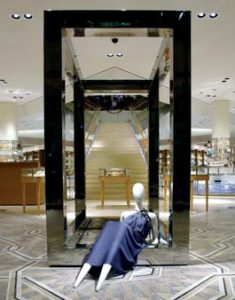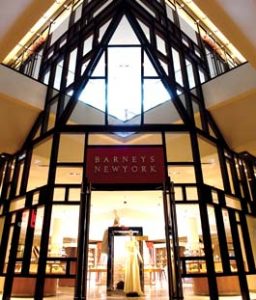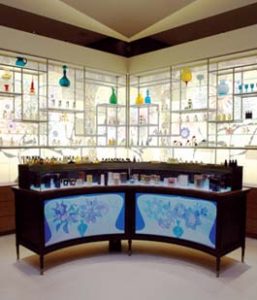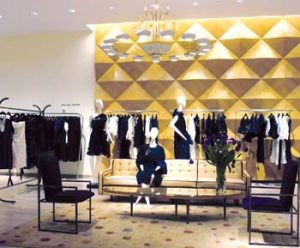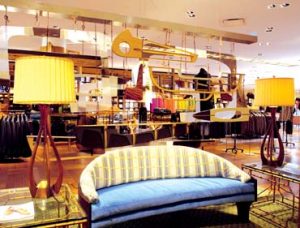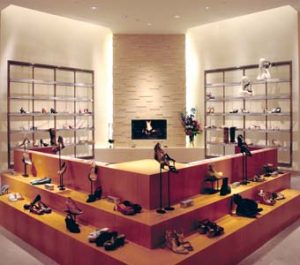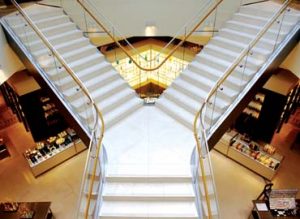Compared to the other New York fashion palaces – Bloomingdale's, Bergdorf Goodman and Saks Fifth Avenue – Barneys New York may be diminutive in square footage. But the brand more than compensates with its big personality, one easily conflated with that of its creative director, Simon Doonan.
Notorious for his wicked British irreverence, Doonan is the kind of eccentric gent that could be found only in New York, working for an eccentric store that could be found only in New York.
But for a time, Barneys was not only in New York. Founded in 1923 in then-less-than-fashionable Chelsea, it moved on up to the East Side in 1993 while it conducted a voracious national expansion. By the early 1990s, it was in every major U.S. city, and some less-major ones, before going into bankruptcy in 1996. New, more cautious, ownership closed stores, stemmed the bleeding and pulled the chain back to three or four U.S. locations (New York, Beverly Hills, Chicago).
Now, direct from frequent network appearances on “Sex and the City” and “Will and Grace,” Barneys has re-established its national following. And so it is back in expansion mode, with a new store in Boston.
Boston? How will only-in-New-York Simon Doonan play in thrifty, preppie Beantown? It seems an unlikely first launching pad for Jones Apparel Group (the Bristol, Pa., multi-brand fashion company that purchased Barneys in 2004).
Nonetheless, in March, Barneys opened in the Copley Place Mall, the first new American Barneys flagship store in 13 years.
Advertisement
And it is still distinctly what it has always been – New York. Busy, urbanite style-mavens who shop at Barneys, from Madison Avenue to the Ginza, know exactly what they'll get.
The store's tagline is, “Taste, Luxury, Humor” and the Barneys shopper considers the store's superlative expenditures funny money well-spent. Under Doonan's direction, a stroll through a Barneys store is like a delightful seasonal tasting menu, an amuse-bouche at a Daniel Boulud restaurant in Manhattan.
“I would say in the 1980s, when you went outside of New York City, you were confronting different cultures in terms of people's fashion thresholds,” Doonan says. “Today, there are groovy people everywhere who are comfortable spending a lot of money, people who love Lanvin and Prada. So it would be a big mistake to change for Boston. Our clients there used to come to our New York store, so they would be disappointed if we were anything less than what they'd come to expect.”
Simultaneously alluring and cheeky, a faux hearth is planted where women are most likely to congregate – in the shoe department. The shelving is 3-inch thick transparent lucite cut into curvilinear waves.
Advertisement
This flagship export does have one significant difference: Rather than a standalone store, it's a tenant in a pre-existing mall that design architect Jeffrey Hutchison says is “best described as Brutalist.”
At 45,000 square feet, the Boston store is roughly one-third the size of the Madison Avenue flagship. “When we sat down to talk about this store,” says David New, Barneys' executive vp of creative services, “we all decided that this would be more of an evolution than a revolution. So, we preserved some of our iconic elements: our marble mosaic ground floor, a grand staircase, a dramatic skylight, as in Beverly Hills.”
The first floor is a former movie theater, the second level (with its 45-foot-by-45-foot skylight) formerly a series of small shops. This is a space with no street-level windows. “In a mall, you already have the traffic, so it was better to make the store design itself an enticement,” says Doonan. “We tried to bring the New York windows into this store's interior. The whole store has to have the creative, unexpected feel of a Barneys window – the whole ethos had to be translated.”
“We didn't want to come into Boston as snotty New Yorkers,” says New, “we wanted to be sensitive to the Boston location, and reference it in subtle ways – in nautical references and even parquet flooring to suggest the tiles in the Celtics' old Boston Garden court.”
The dramatic entrance itself appears to be a two-story ship's prow poking through the second floor of the mall – only with the kooky structural skeleton of Piet Mondrian's “Broadway Boogie Woogie” painting, red panels emblazoned with BARNEYS NEW YORK serving as the accent squares.
Advertisement
The nautical theme resurfaces in artist John-Paul Philippé's work. Philippé, who has created murals and sculptural wall dividers for all the Barneys stores in the U.S. and Japan, worked his magic again here in unpredictable ways. One of the most striking is a marine-themed mural that suggests model ship hulls, surfboards, sail rigging and other fishing implements as might be assembled by the ghosts of Charles and Ray Eames – economically constructed, mostly out of plywood, cut on a bias to show the grain.
At Barneys, the fixtures and the mannequins also become art. The cosmetics department counters are fronted with Philippé's hand-colored paper collages, in purple-hued floral patterns that Philippé also created for Barneys Ginza, Tokyo store. [See VM+SD's article on Barneys Tokyo, “Found in Translation,” in March 2005, page 42.] “Here, the store is more angular,” says Philippé, “so the flowers are more fractured, angular and prismatic.” Whereas other stores' counter fronts appeared curvilinear art nouveau, these have a Gothic appearance in marine blues and violets.
Just inside the front door are mannequins in a stainless-steel cube-like frame. As Doonan explains, “The typical thing to do is to put mannequins on platforms. Boring. But we didn't want the models rattling around and I have a bed frame like this. It seemed a good way to give them a place to rest, contain them and frame a vista of the grand stairway.”
The mannequins themselves are a Doonan creation. “Mannequin fingers and feet are a nightmare,” the veteran window dresser says. “The fingers break. And struggling to get a shoe on a mannequin foot ruins it. With the spikes for all the extremities, we can affix the Brancusi-like heads onto any arm or foot. Really, it's much better to display shoes on a head – which we can now put on the end of a foot!”
For the Co-Op section of the store, here as nationwide, all the mannequins are a glossy “fairy tale blue” and can be found perched in wire trees or cavorting in the skylit second floor, hanging from the wooden cube.
For the men's shoes section, Hutchison created high-backed upholstered benches, suggestive of old train station waiting rooms. For the women's shoe department, pink and green fabrics liven up low-backed banquettes – allowing women to chat – and a gas fireplace hearth. Corseted columns are tightly laced. In both areas, Philippé created unique murals. For the men, plays of texture and transparency with whale-tales, lighthouses and canoes. For the women, shoe silhouettes cleverly pinwheeled into bouquets of flowers.
As for further expansion, Jones Apparel Group plans on going full-steam head, doubling the Barneys New York chain by 2008 with new 80,000-square-foot locations in Dallas (fall 2006), San Francisco (fall 2007) and Las Vegas (fall 2007) and, possibly, Atlanta, San Diego, Miami, Washington and Chicago, as well. New York no longer has an exclusive on the Barneys New York brand.
As in many Barneys stores, the staircase is a dominant feature. In Boston, it ascends with minimal support and transparent glass balustrades to accentuate an illusion of surreal weightlessness.
Client: Barneys New York, New York
David New, executive vp, creative services
Simon Doonan, creative director
Philippe Hum, vp, store design
Lisa Gianni, project manager, store design
Design: Jeffrey Hutchison & Associates LLC, New York
Jeffrey Hutchison, president
Luis Fernandez, designer
Agnieszka Chromicz, designer
Constance Sasso, designer
Architect: Gensler, New York
General Contractor/Ceilings: Structure Tone, New York
Outside Design Consultants: Johnson Schwinghammer, New York (lighting)
Clive Samuels, Princeton, N.J. (mechanical/electrical engineer)
Fixtures: Patella Woodworking LLC, Montreal
Pinehurst Store Fixtures Inc., Toronto
Amuneal Mfg. Corp., Philadelphia, Pa.
ITIF Brand Logistics, Toronto
Flooring: Architectural Systems Inc., New York
Furniture: Chelsea Workroom, New York
Phoenix Custom Furniture, New York
Lighting: Targetti, Florence, Italy
Mannequins: Goldsmith LLC, Long Island City, N.Y.
Signage/Graphics: Triangle Sign & Service, Baltimore
Wallcoverings/Materials: Phillip Jeffries Wall Coverings, New York
Photography: Adrian Wilson, New York
Architectural Systems Inc. Goldsmith
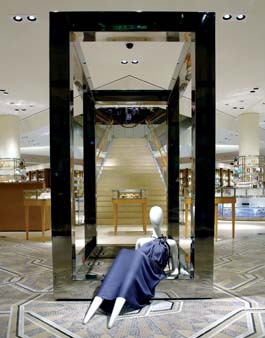

 Photo Gallery1 week ago
Photo Gallery1 week ago
 Headlines3 days ago
Headlines3 days ago
 Headlines1 week ago
Headlines1 week ago
 Headlines2 weeks ago
Headlines2 weeks ago
 Headlines1 week ago
Headlines1 week ago
 Designer Dozen1 week ago
Designer Dozen1 week ago
 Headlines1 week ago
Headlines1 week ago
 Headlines1 week ago
Headlines1 week ago
